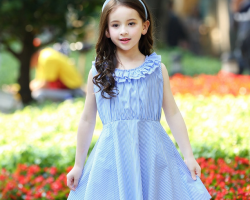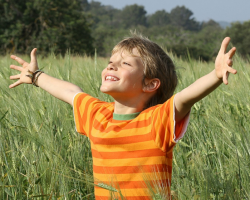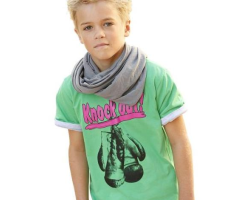Bruises and abrasions are faithful companions of any child especially in the summer. Each parent should know how to carry out first aid and alleviate the condition of the child, eliminating pain.
Content
- First medical care for bruises and abrasions in children
- First aid for bruising of soft tissues for a child
- What is the help of bruises for children?
- How to help a child with a bruise?
- First aid for bruises of the finger of the child
- How to help with a bruise of the forearm for a child?
- How to carry out first aid for a bruise?
- First aid for bruises of the abdomen, what to do?
- How to help with a bruise in the spine?
- What to do with a bruise of the head, if a bump?
- What to do with strong bruises?
- What to do in the first place with a bruise: tips and reviews
- Video: “A bump on the head of a child! The child fell and hit his head "
First medical care for bruises and abrasions in children
- Each parent has the opportunity to face various bruises, abrasions and broken knees in children. This problem is especially more frequent in the summer, when the arms and legs of the kids are open and not protected by clothes. It is necessary to take care of such bruises, since untimely treatment can bring infection into a fresh small wound. This can be the beginning of serious health problems of the child
- No child has yet been able to avoid injuries. In this case, there are light bruises received in any conditions: on the face, while driving a bicycle, videos, sports and even at home. Wounds, hematomas, bruises and bruises most often appear in children due to falling from a small height. Here we mean the height of its own height or step, chair, border
- Abrasions and scratches most often occur due to the inaccurate treatment of children with pricking and cutting objects, glass, wood, metal. The smaller the child by age, the more he suffers from his improper coordination of movements. The fact is that in a small child, the head is much larger in terms of the body and most often it becomes the reason for the child’s inability to maintain balance. An older child suffers from trauma of the limbs

You can distinguish between the most common body bruises as:
- scratches - damage to the upper layer of the skin
- abrasions - damage to the surface layer of the skin, more significant than scratches
- a cut - simultaneous damage to several layers of the skin
First medical care in case of damage to the skin with a child:
- Wash the wound thoroughly from dirt (if there is one)
- Be sure to try to stop bleeding (any complexity)
- Treat the wound with an antiseptic - a special medicine that can remove pathogenic microbes from the wound
- Put a sterile bandage on the wound that protects from the wound of microbes
First aid for bruising of soft tissues for a child
Wound washing -the best and correct first medical care. Rinse the wound with clean water and soap. In this case, it is best to use a cotton swab or napkin that will help to carefully moisten and rinse the wound. Thorough washing will save your child from infection in an open wound. The soap has the opportunity to kill microbes, so rinse the wound every day until it is completely healing. The rest of the time the wound should be kept under a sterile bandage.
If you wash the wound not with water, but hydrogen peroxide, be careful and careful. Only small scratches and abrasions are subject to this method, since the entry of air bubbles into deeper wounds provokes embolism - the entry of the bubble into the blood.

If the wound bleeds, then the main task in this case is stop the bleeding.The easiest and most correct way is to carry out pressure. To do this, rinse the wound in advance, prepare a sterile bandage and press on the wound strongly, leaving this position for fifteen minutes.
If the wound is located on the limbs, it is recommended to raise the damaged limb up to slow the bleeding. With not severe bleeding, you need to change the bandage, and with strong, apply one more on top - so as not to disrupt the clot of blood.
In order to neutralize the place of the bruise or carry out a prevention that prevents the ingress of microbes into the wound, apply an antiseptic.Antiseptics have two advantages:
- remove inflammation
- accelerate healing
The most common antiseptics that can be used for children is:
- a solution of green
- iodine
Important: Be careful! In no case should you use drugs based on ethyl alcohol! When they fall deeper into the tissues, they are able to cause necrosis. They are intended only to process the edges of the wound and the area around the wound.
After washing and processing the wound, it is necessary put a sterile bandage.She will protect the wound at first and leaving her clean. The bandage must be dry.
It is best to use a bandage folded several times or gauze fabric. Remember that the bandage should not be too tight and should have air access that will accelerate the healing process. It is best to attach the bandage to the wound using a bactericidal patch.
If the child stained the bandage, it should be replaced. If the bandage has dried to the wound, in no case try to tear it off, excite it with hydrogen peroxide.

What is the help of bruises for children?
The most common children's wound is injury.This injury can damage:
- the upper layer of the skin
- subcutaneous fat
- muscle tissue
- nerve endings
- blood vessels
Upon receipt of a bruise, a sharp pain in the place of injury immediately occurs because the nerve endings are damaged. Moreover, the pain effect varies depending on the place of production. Where there are more clusters of the nerve endings, it is stronger: for example, fingers or face, and where less - not so noticeable: back, buttocks.
If the bruise is strong, then it is quite capable of damaging the blood vessels and, as a result of this, appears in a bruised place bruise. Blood vessels that are located under the skin pour blood into the surrounding tissues and as a result of which darkening occurs - hematoma.
To make a bruise less or completely get rid of it immediately after the bruise, a cold compress is applied. It can be ice wrapped in a towel, or maybe something from the freezer: a piece of meat or a bag of vegetables.

The bruise has the ability to change his color:
- bard color - immediately after a bruise, as a result of damage to blood vessels
- blue or slightly purple after blood turning
- yellow - with a measure of healing of a bruise
A cold compress should be kept in a bruised place for about twenty minutes, and then apply a sterile bandage moistened in cold water. If the bruise is obtained on those parts of the body where it is easy to get an infection:
- jaw
- ears
- nose
Be sure to monitor how the wound behaves and whether suppuration is present in it. Pain will be said about this, which every day becomes no less, but stronger. The skin surrounding the hematoma becomes a red shade. Treatment of such cases includes surgical intervention.
In any case, each parent needs to maintain cold calm and give all his strength to eliminate pain in the child. Excessive panic is capable of developing a feeling of fear in the child and even enhance pain. Remember and explain to the child that any wound heals.
How to help a child with a bruise?
Feet bruises are a very frequent phenomenon among children, as every child loves to run, ride a bicycle and jump. The first medical care in this case includes a number of important measures:
- Provide complete rest of the damaged limb.Set the child comfortably and calm down. Strong pain only lasts the first five minutes after the bruise
- Make damage to the damage.This will help you plan your actions, starting from the size and nature of the wound
- Rinse the woundafter all, most likely the child received it, hitting the dirty surface: asphalt, earth, stone, border. Rinse the wound with clean water, preferably with soap
- Cool the damaged place.This will help relieve strong pain in the child and loosen hematoma
- If necessary, use the antiseptic: iodine or green.This is necessary in order to neutralize the wound from microbes, remove the inflammatory process and accelerate healing
- Put a dry sterile bandage in case of bleeding from the wound.If the wound is not strong, then the bandage can soon be removed

First aid for bruises of the finger of the child
The bruise on the fingers is quite painful, since a fairly large number of nerve endings accumulate on them. With a bruise of the finger, first of all, attention should be paid to its integrity and exclude a fracture. Strong pain and difficulty movement of the finger can tell you about this. If there is no fracture, you should draw the whole spectrum of measures:
- rinse from pollution
- use an antiseptic
- put the bandage
- cool the damaged area

If you still find a fracture of your finger and visually notice its swelling, an increase in size, blue-these are obvious signs that you should ensure complete immobility to your finger and urgently go to the emergency room.
How to help with a bruise of the forearm for a child?
The injury of the forearm occurs mainly due to a strong blow or fall. After the child is bruised by the forearm and showed you the place where the pain is localized, make a number of important measures:
- provide the child with a convenient position sitting or lying down, give peace
- evaluate the place of bruises for the presence of swelling, abrasion and hematomas
- check how preserved the motor function of your child’s hand, this will help exclude a fracture
- with a fracture, you should urgently go to the emergency room, since you cannot solve this problem yourself
- if you find only a bruise, do your first aid

- if the wound is not deep, rinse it with water with soap or hydrogen peroxide (do not wash a deep wound with peroxide)
- immediately after washing, stop bleeding if there is an abrasion on the forearm
- stop bleeding will help crushing the closing to the wound
- if there is no bleeding wounds, attach cold to a bruised place to weaken the hematoma
How to carry out first aid for a bruise?
Hand bruises in childhood occurs quite often. This occurs due to the excessive activity of the child and his excessive curiosity. Hands are that the first thing is exploring the world around us and become a slowdown in the fall. Depending on the localization of the bruise, take medical measures:
- rinse the wound, focusing on its depth with soap, clean water or hydrogen peroxide
- check how preserved the motor function of the hand, this will help exclude a fracture
- attach the cold to the bruises and stop bleeding in abrasions
- apply an antiseptic: green or iodine if the wound requires that
- put a sterile bandage on the wound to keep it clean
- provide your hand in peace, constantly change the bandages to cleaner and fasten them with a patch

First aid for bruises of the abdomen, what to do?
It happens that during the fall, the child can damage not only the limbs, but also the skin of the abdomen. This happens mainly in the summer, when the child wears a minimum of clothes and often runs, rides a bicycle, rollers and plays. After the child has received a bruise of the abdomen, you should:
- check the integrity of the skin, process and disinfect small abrasions and scratches
- if the child has become bad, provide him with complete peace and horizontal position
- you should ask the child in detail about where he experiences pain and call an ambulance if the child is very complaining about pain
- an experienced doctor must assess the condition of the child and exclude internal bleeding
- During the bruise of the abdomen, it is easy to get injuries of internal organs, for help in such treatment you need to consult a doctor
How to help with a bruise in the spine?
The spinal injury is a serious bruise and their own parents will not be able to cope with it. Upon receipt of a bruise, parents should call an ambulance and, in the meantime, provide the child with complete peace and horizontal position.
The doctor diagnoses the strength of the damage, because the bruises of the spine are different:
- bruise of any vertebrae: one or more
- rupture of the connecting ligaments that connect the vertebrae
- fracture of the arc
- the vertebrae of the vertebrae
- cutter fracture
The doctor determines the place of bruises and its localization. The injury can be:
- in the lumbar region
- the cervical department
- thoracic region
The complexity of treatment and hospitalization in such cases depends only on how severe damage to the spine, it is open or closed.
What to do with a bruise of the head, if a bump?
The head bruise is often accompanied in children by obtaining a cone. Cone -this is a hematoma that occurs on the soft tissues of the head as a result of a strong bruise and hemorrhage in the skin. The bump is not characterized by severe, but tangible pain and visual increase.

With stronger bruises, a child can feel clouded in his head, nausea and even drowsiness. To weaken the pain and reduce the bump in size, a cool compress should be immediately attached to it. Be careful, too cold, applied to the head can provoke headaches.
Keep a cold compress on the bump no longer than fifteen minutes. The child should provide complete peace and not disturb him. It is best if the child rests and sleeps. If headaches do not disappear and persecute the child and nausea is added to them, you should consult a doctor in the emergency room for help to exclude the head injury.
What to do with strong bruises?
A strong bruise is always a stress for a child, so during a wound, you must properly organize your actions:
- provide your child peace so that he is not disturbed by the surrounding factors
- calm the child and completely assure him that nothing terrible happened
- try to independently provide first aid: disinfect wounds, stop shelter, cool hematomas, apply a bandage
- call the doctor and while you wait for him to give the child to drink water, with caresses and conversations ask him about all the sensations
- remember that your panic and neurosis will only strengthen the fear of the child and enhance its pain

What to do in the first place with a bruise: tips and reviews
With a bruise, each parent should be completely ready for any difficulties and know about the norms of first aid:
- have a home medicine cabinet with a full set of medicines: iodine, green, hydrogen peroxide, alcohol, bandages, patch
- possess the technique of washing the wounds with soap and clean water
- be able to apply a sterile bandage on the wound, fix it on the body
- be prepared for the fact that the child may have to be transferred on his hands and provide him with a calm horizontal state








Thanks for the advice, I think they are familiar to many. As a mother of two fidgets, I always keep a platelet gel in a first -aid kit, which eliminates bruises very quickly. It is very important for me that the drug is exclusively on a plant basis and acts quickly. This gel is just like that. It is important to start using it immediately after the bruise. So it will help and swelling to remove and the bruise will pass faster.
My husband taught me to ride yesterday, in the end, I have abrasion on my knee)) They entered the pharmacy, we advised us Argosufan. I was told that it heals well and protects against infection. Today, everything is better, it can be seen in the abrasion that it will pass soon, but I smear so far, and a bantik on top.
Christina, what's in the composition, why does it heal well?
Galina, Argosufan antibacterial due to silver sulfatiazole, with a wide spectrum of the antibacterial effect of it, so no infection is propagated and the wound is delayed well.
The grandson cut an eyebrow in the summer, I had to lay the seams. How is the holidays without adventure! The surgeon appointed to smear Tyrosurus with gel. So that the infection does not hit and quickly heals. Now the scars are not visible, the wound was so neatly dragged out.
My husband is like a child, honestly. My son bought videos and also wanted to. Well, the son, even at least rides well, and the husband fell, so much that there was abrasion on his knee, on his hand, and even on his face. So processed him with Argosufan all abrasions. They healed quickly enough, good cream. By the way, I use it myself if I cut out about paper at work.
Thank you all for the advice, relevant for me.
Here are also in such cases that the first to provide assistance with abrasions-tsarapins and other trouble the cream bought the Argosufan cream. Everything is really he who heals with him - in a few days there is no trace in the place of damage to the skin.
It is necessary to attach cold on the bruise, and rinse the abrasion and spread with green. It must live quickly.
With abrasions, I have not been using green for a long time. She is very marking and dries excessively wounds. I also began to buy Argosufan cream for such cases - I am very pleased with them. He protects the wound from pathogens entering it, and heals everything without problems in a matter of days.
Recently, I walked, stumbled and fell in the end. I washed at home well and processed sulfargin ointment, there is silver ions, so the ointment has antimicrobial properties. I used this ointment according to the instructions and everything healed without complications.
Thanks for the advice
In summer, in general, trauma is increasing, after all, we are more often leaving for nature, and there is a slightly different story with abrasions.
This summer, this summer had so many abrasions that if we had not used any healing ointments, I’m afraid to imagine what would happen to the child’s skin because of all sorts of falls from a bicycle, a scooter, and just out of the blue. Argosufan showed himself best of all, he dragged on faster and more painless with him, and we can even say without scrames, which was generally very pleased.
So my child often receives abrasions (((
Arina, there is no getting away from this. I also have a child falls on walks, but it doesn’t do without consequences, more faithfully without abrasions. Well, I always have a sulfargin for such cases at home, so I process abrasions with this ointment. They do not heal badly, and the child does not cry during processing, since the ointment does not pinch. keep in mind.
I thought now there will be less abrasion in children, since long trousers are already worn, and not in shorts, and even through them they manage to come home with abrasions.
Diana, in the winter, through cotton pants, the abrasions manage to receive. True, I immediately wash them and apply the Argosufan cream. They already wrote about him above. He really doesn’t delay his action, so that take a note.
Thanks for the info.
I bought the above mentioned Argosufan. Indeed, in the child the next day, as I began to handle the abrasion with this cream, a crust formed on it. As a result, the abrasion dragged on, nothing was inflamed. And there were no children's screams during processing. So that this is our remedy, I can say with confidence.